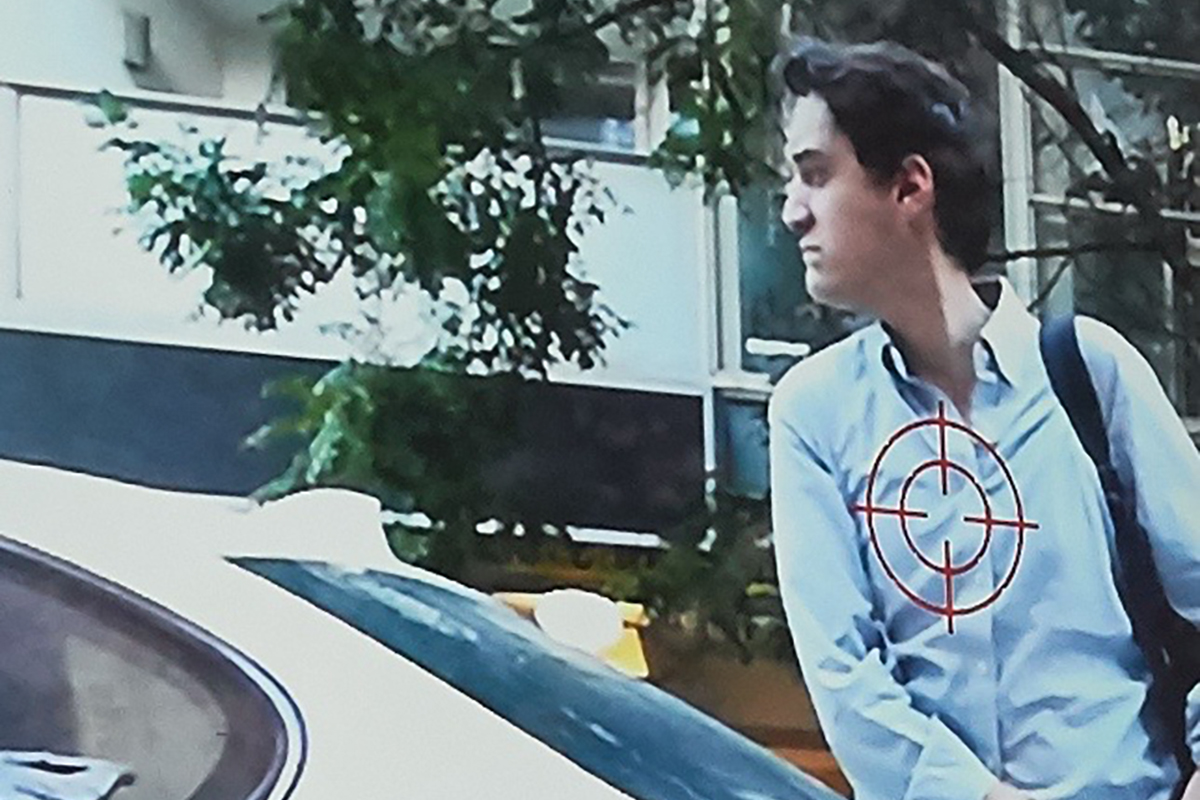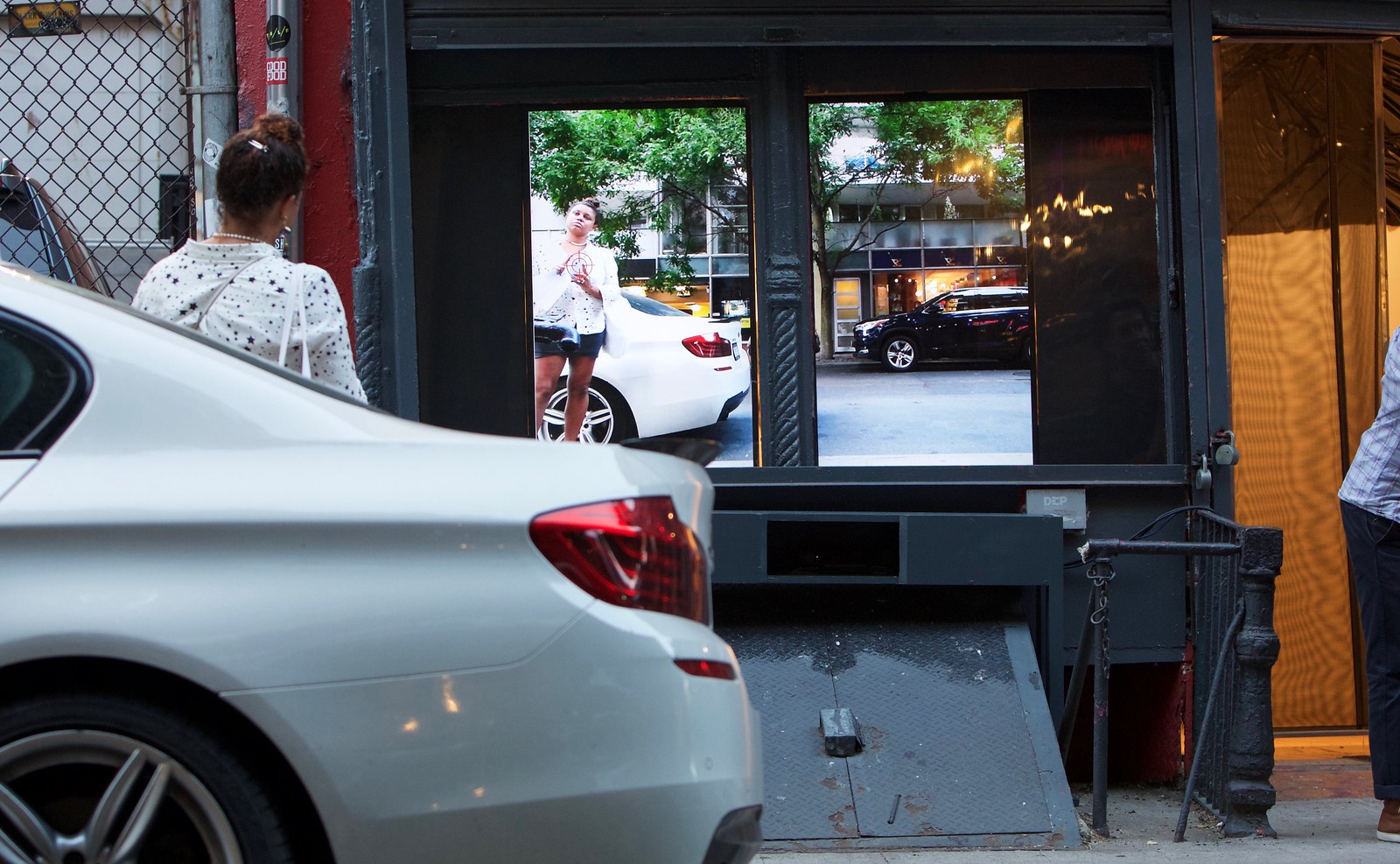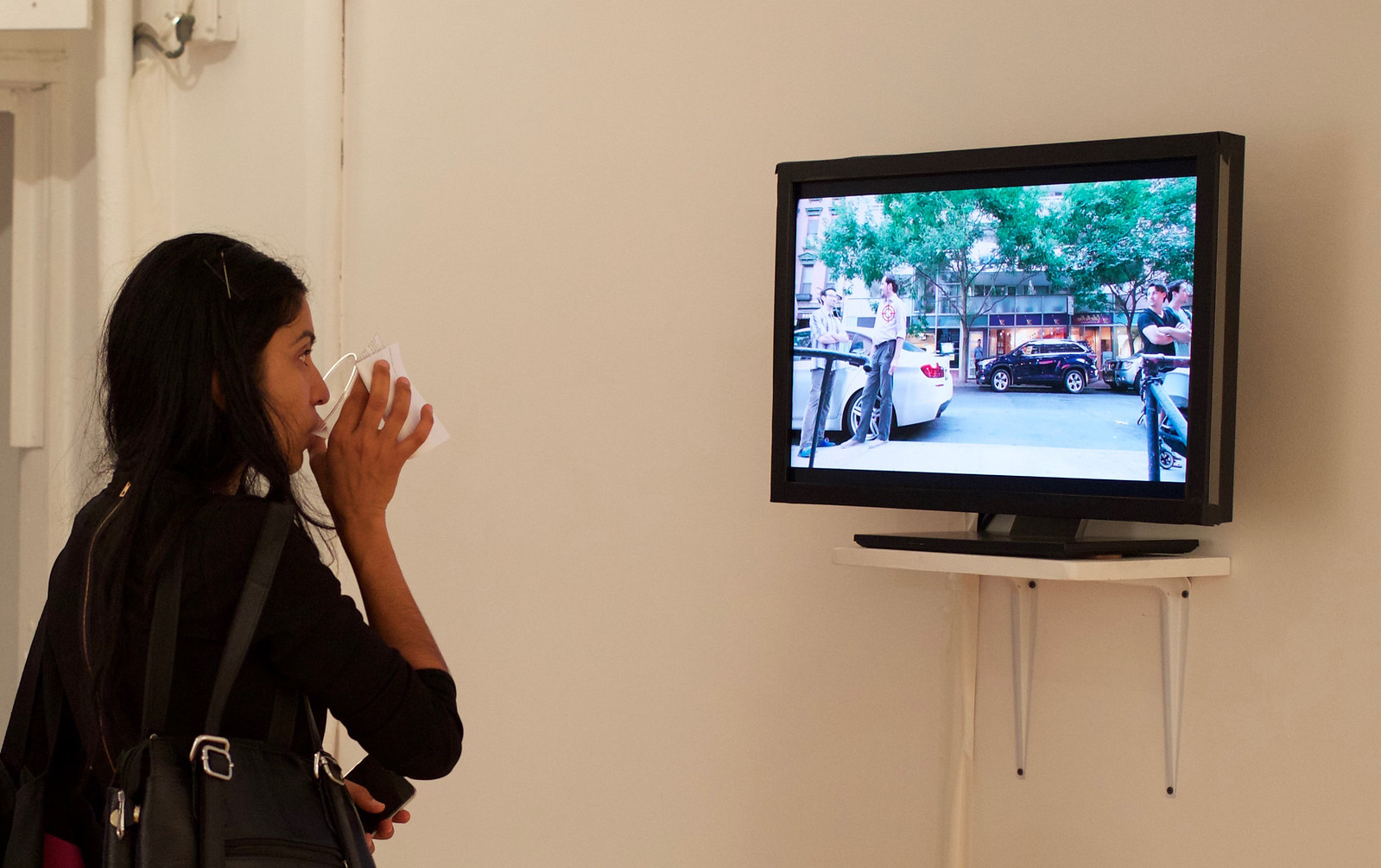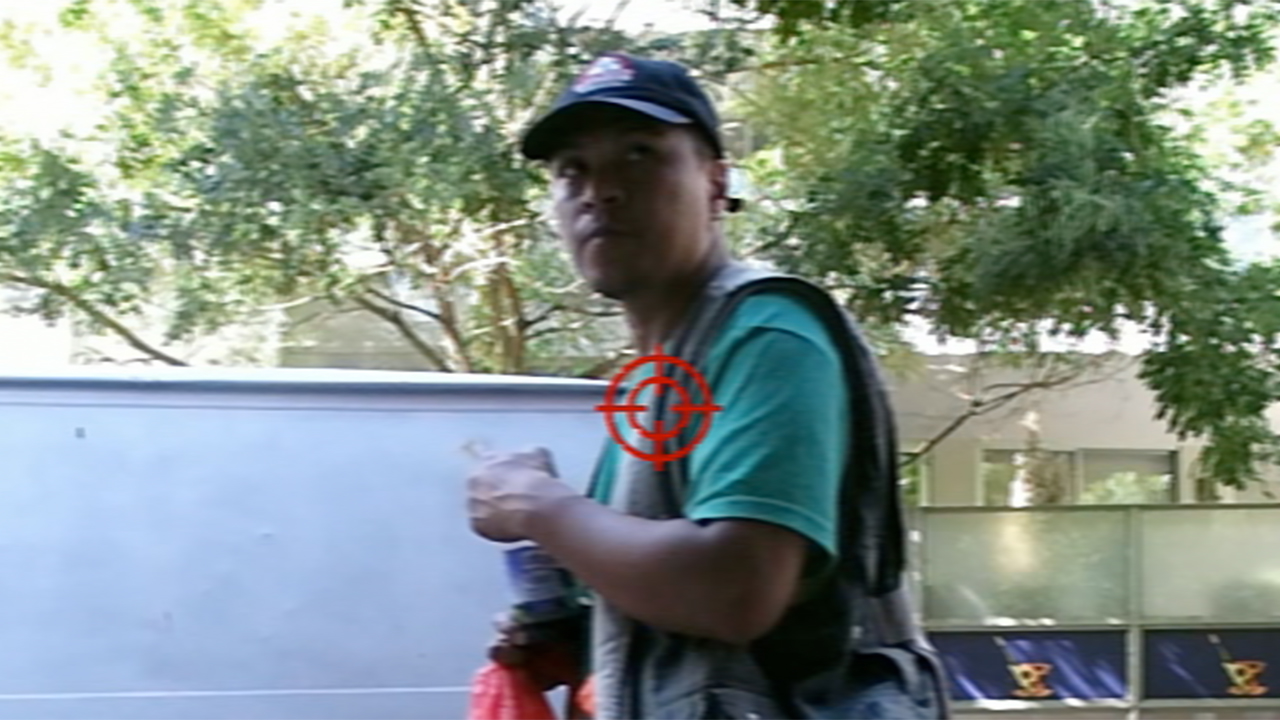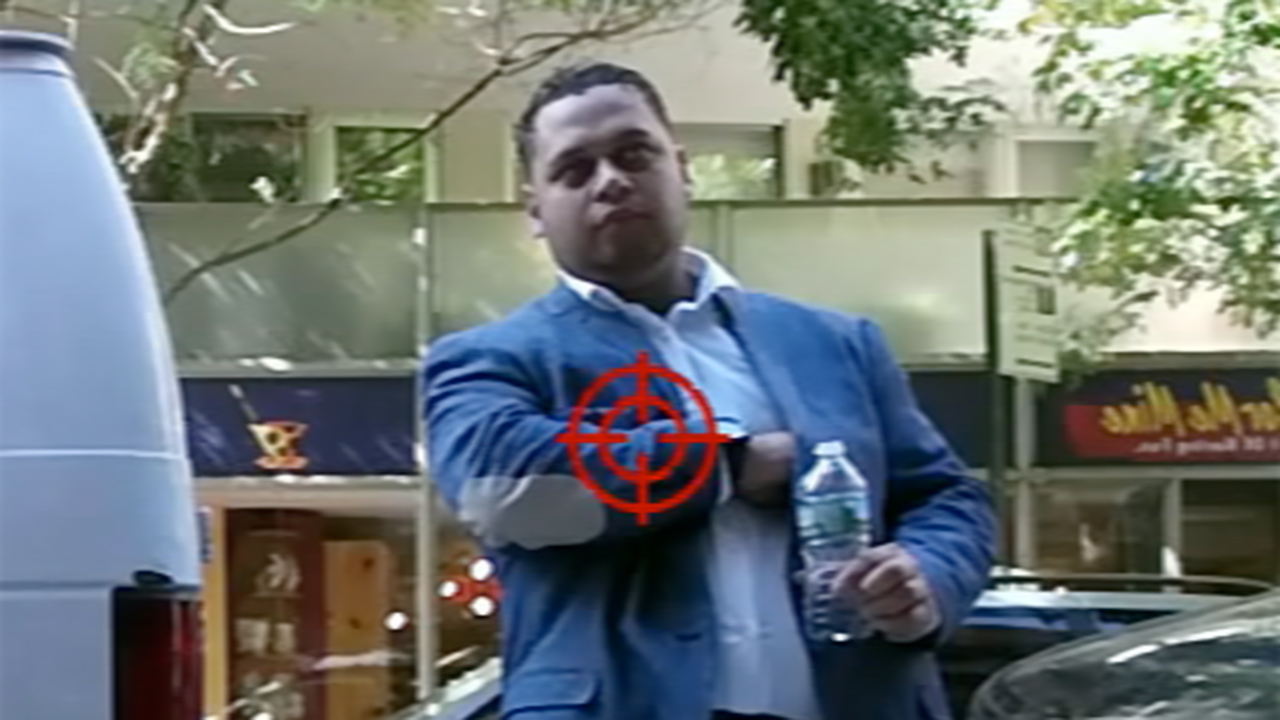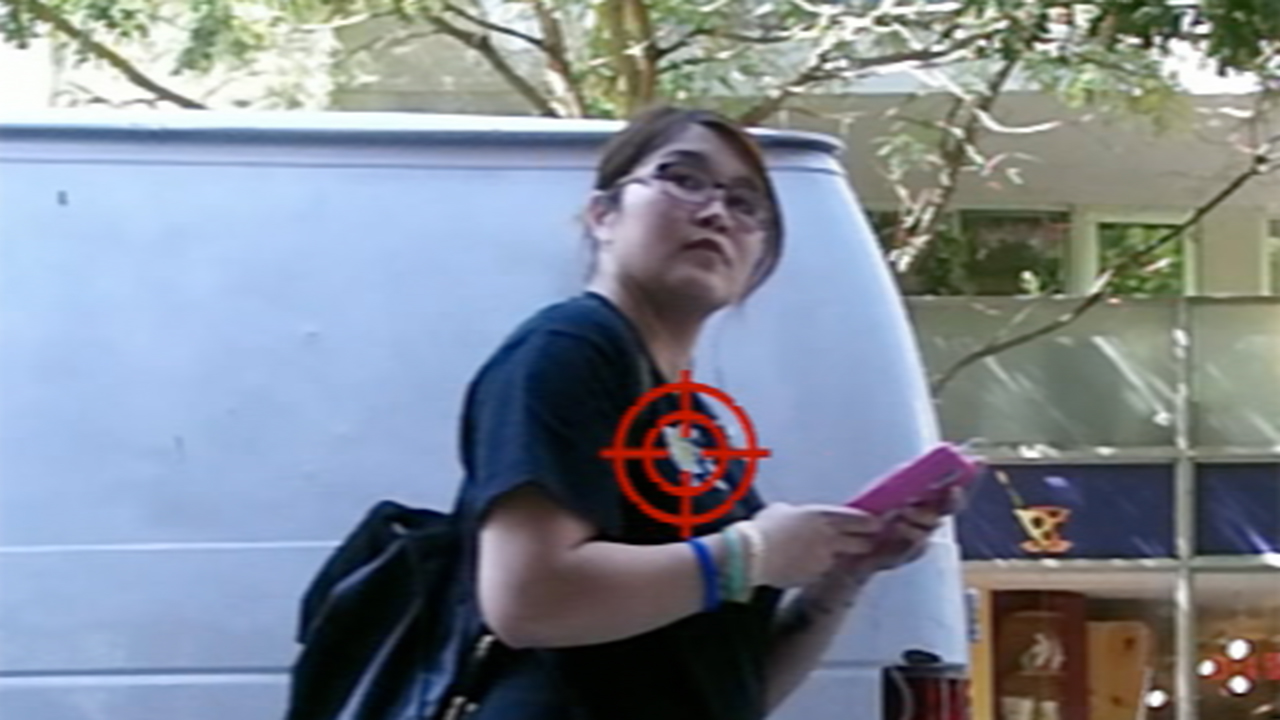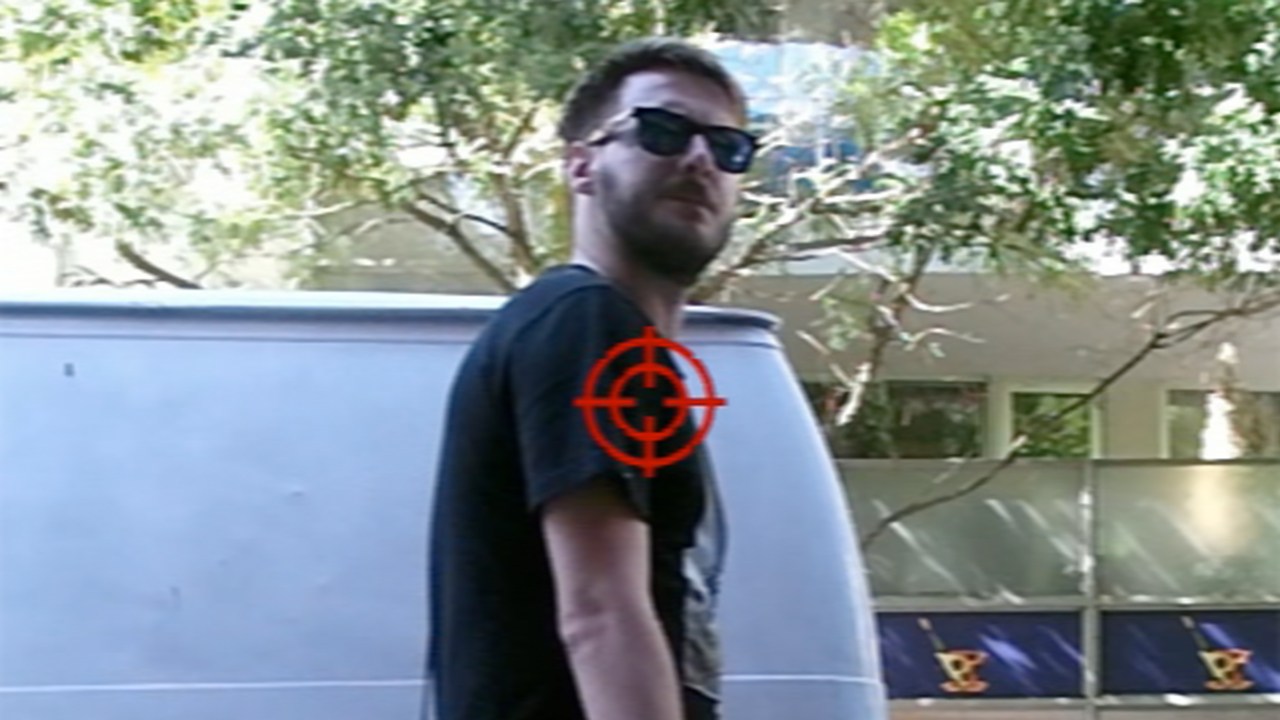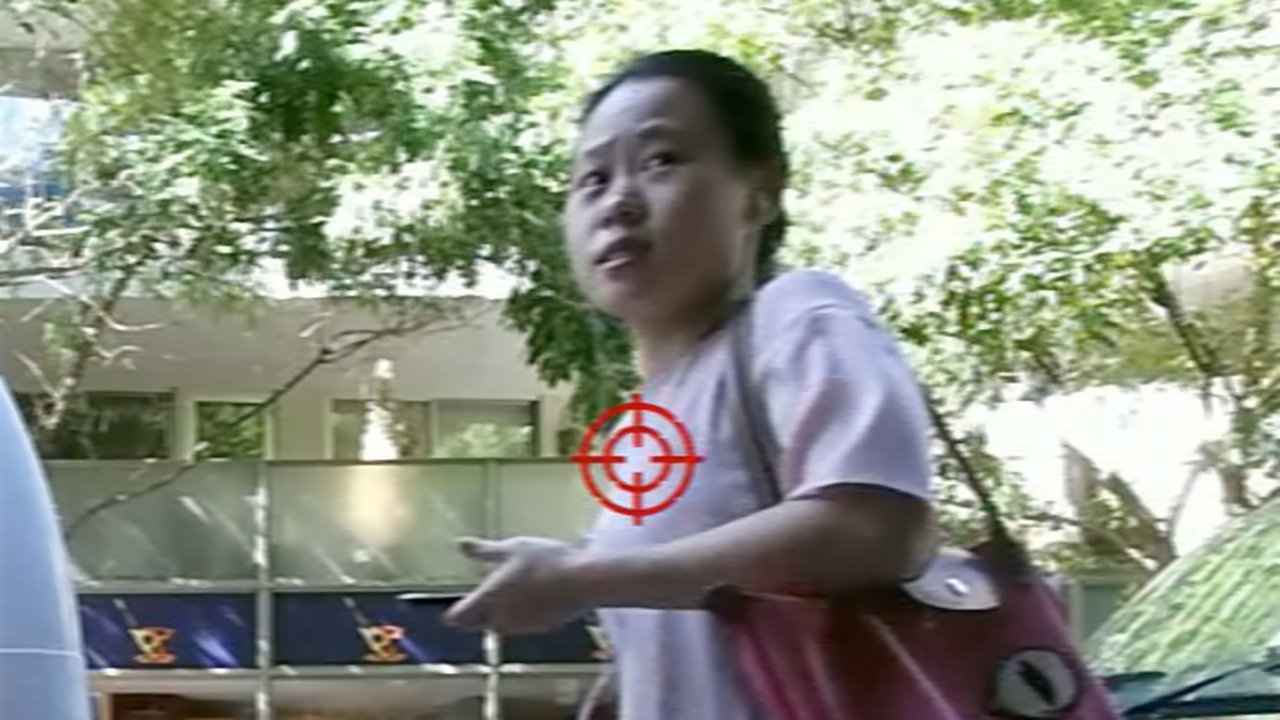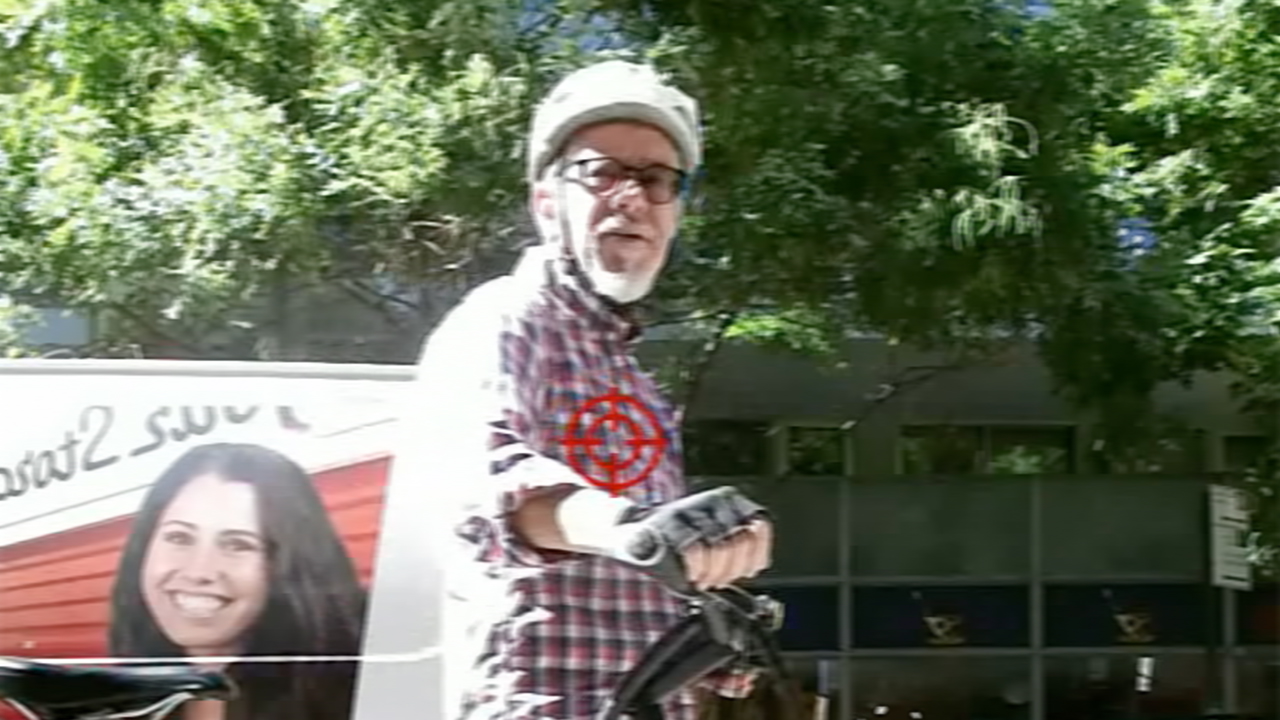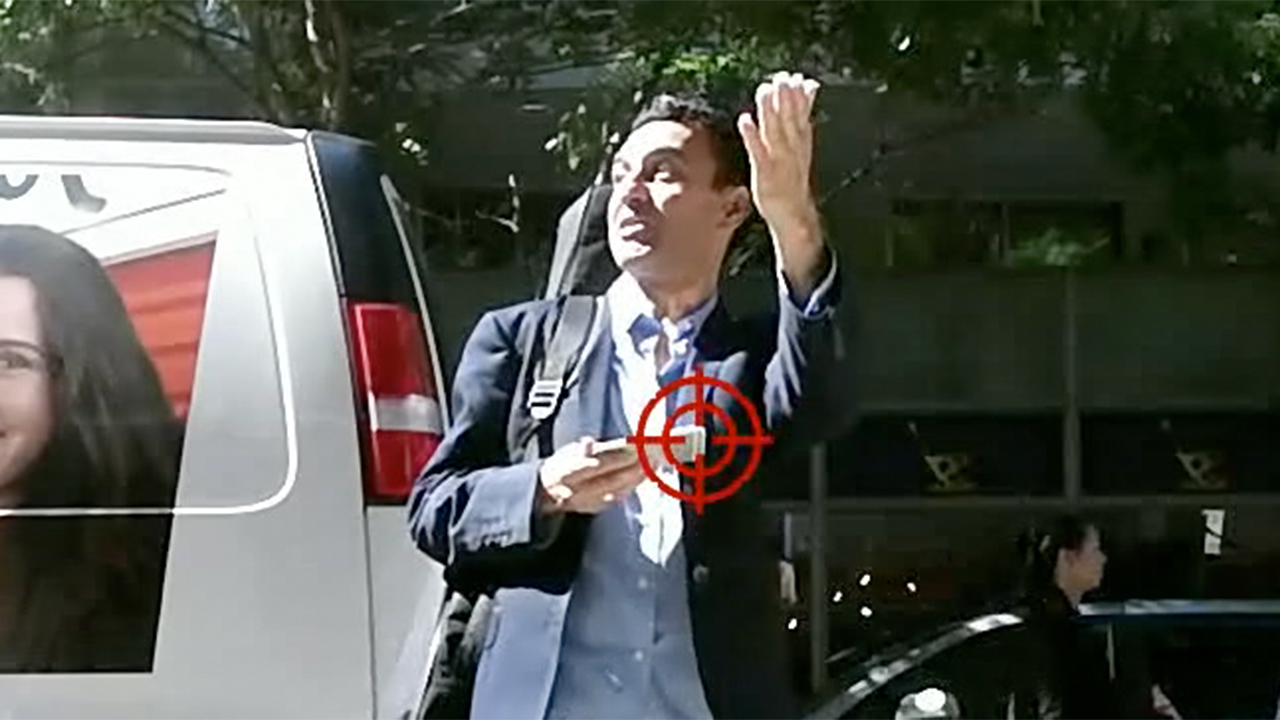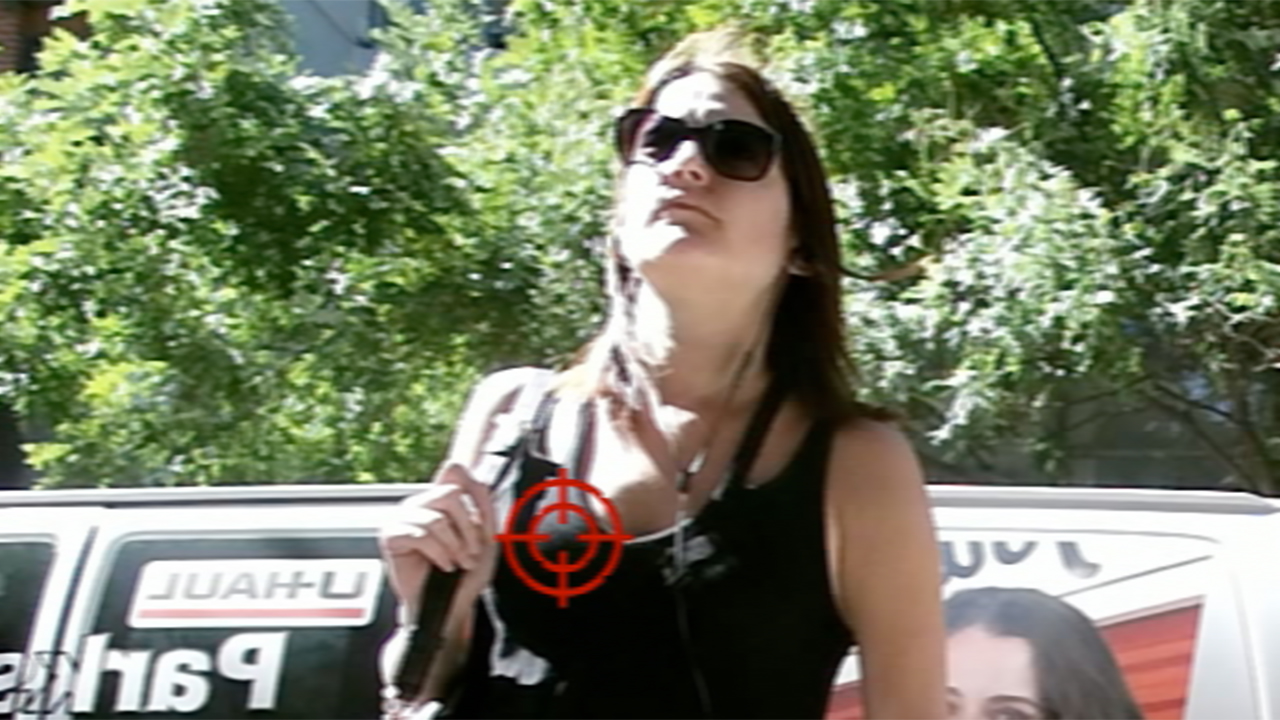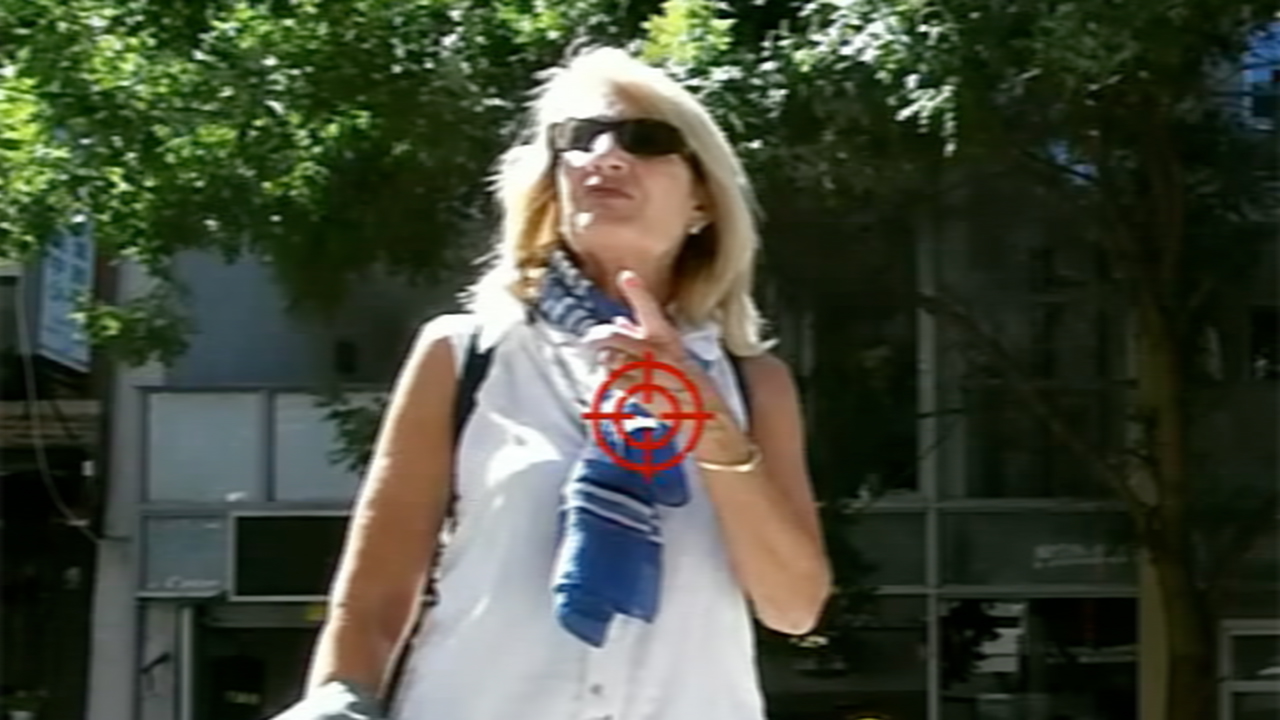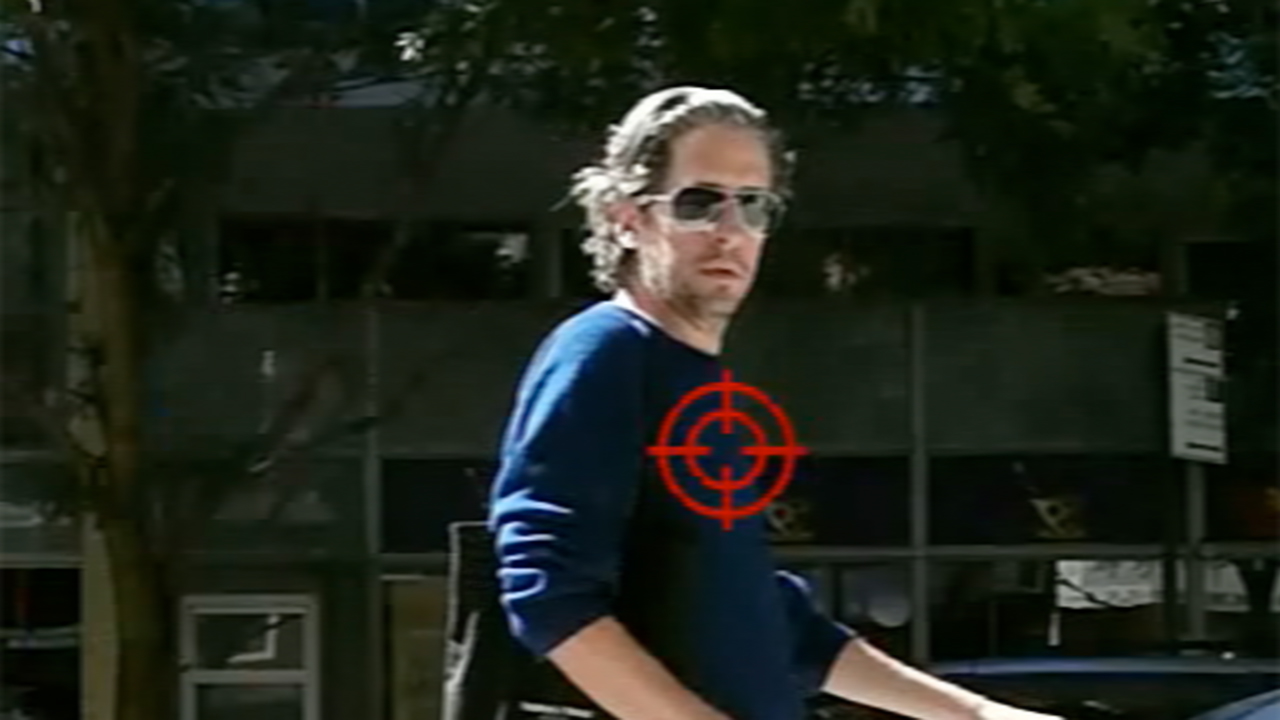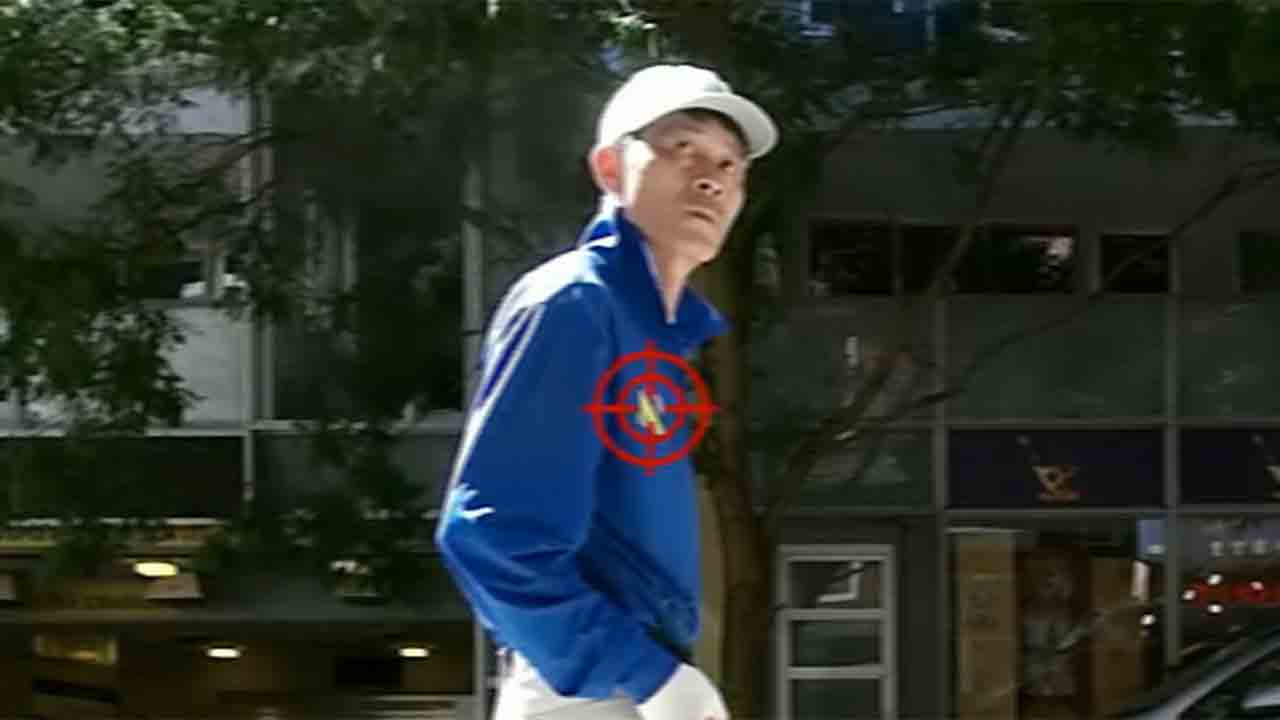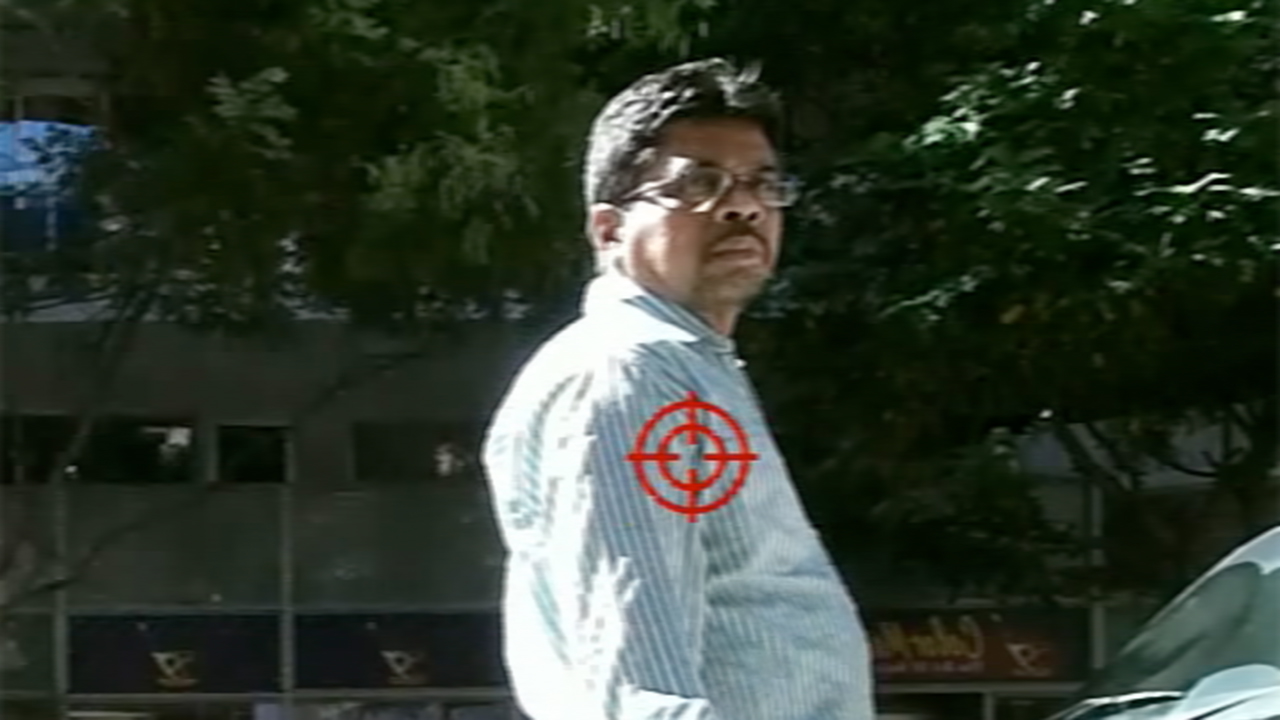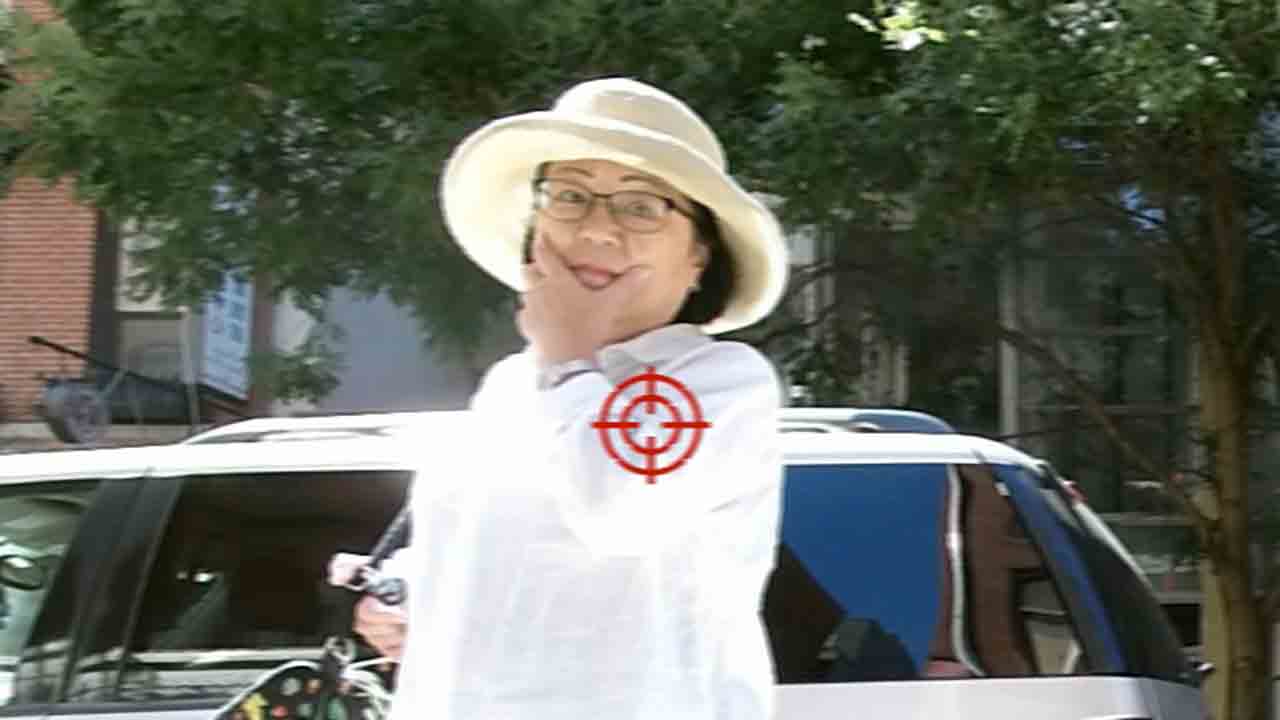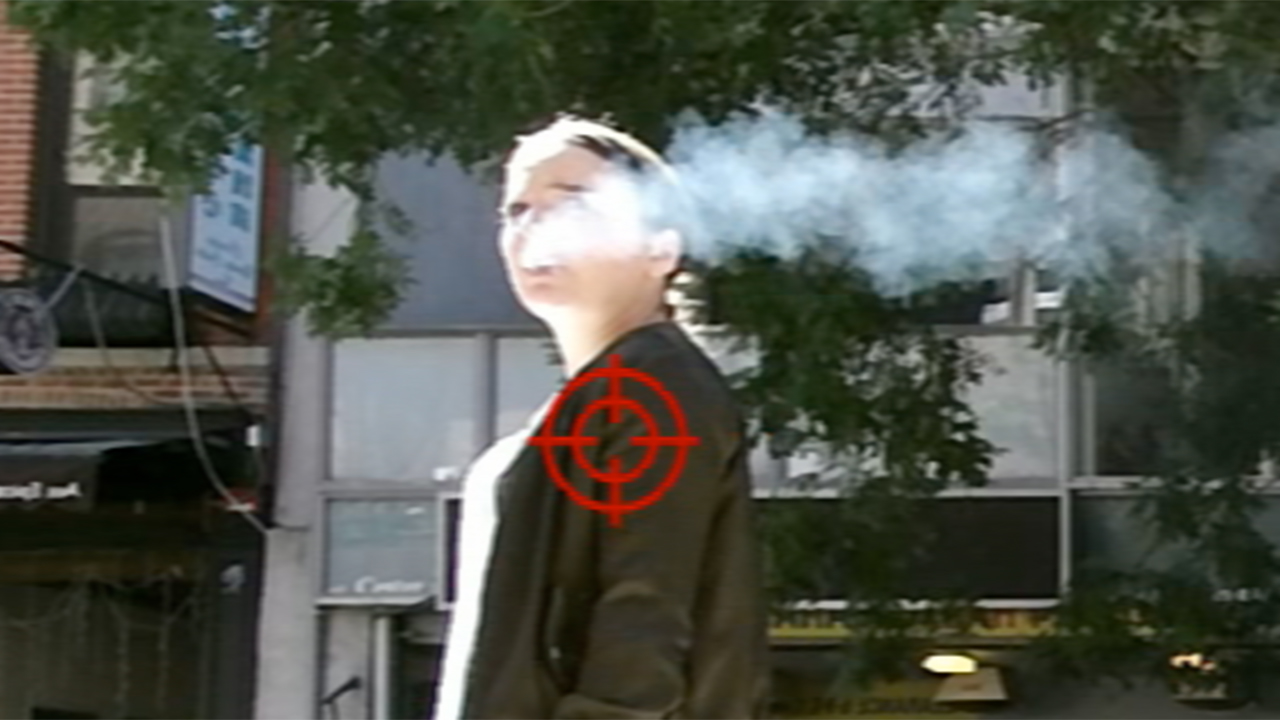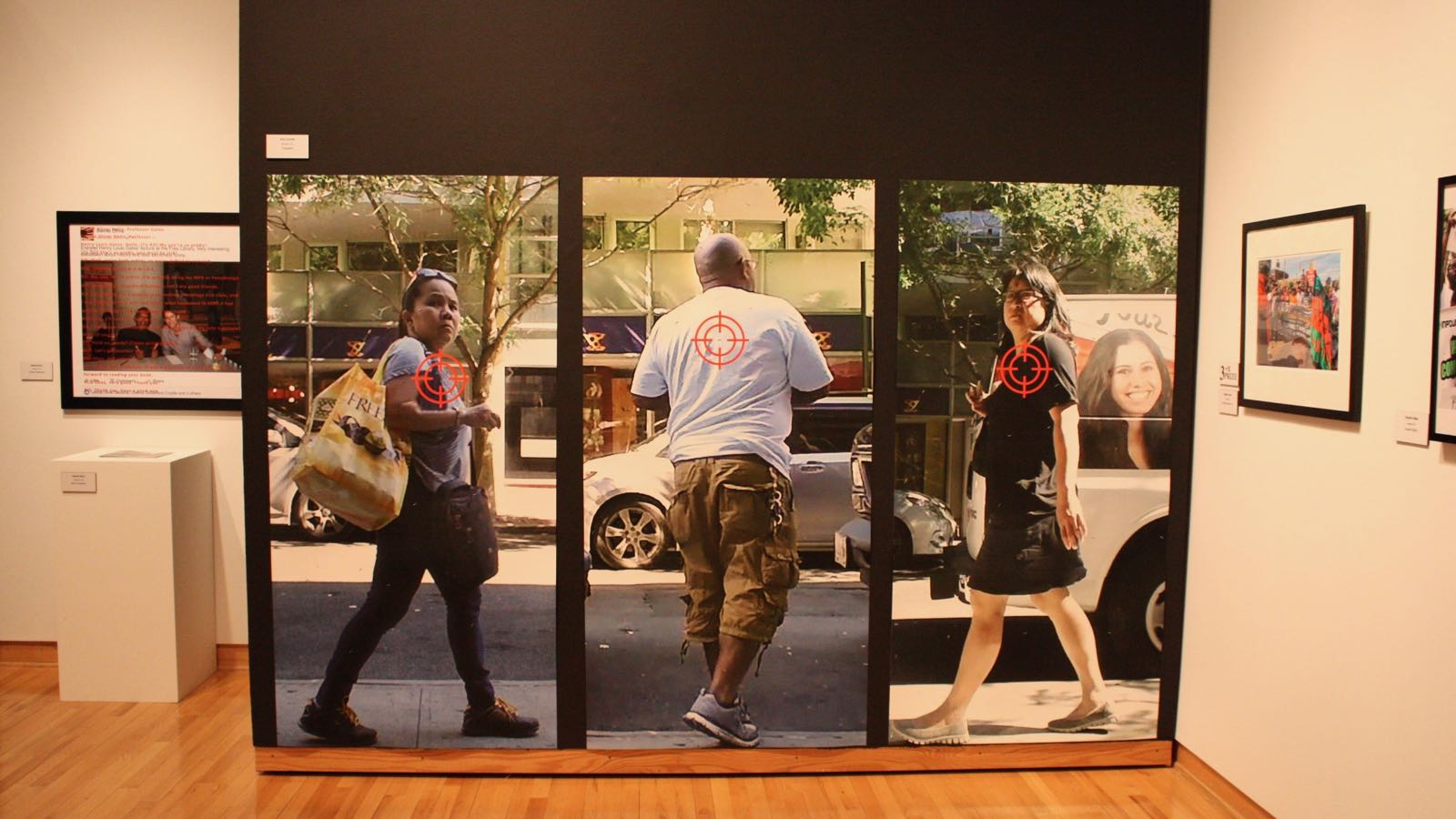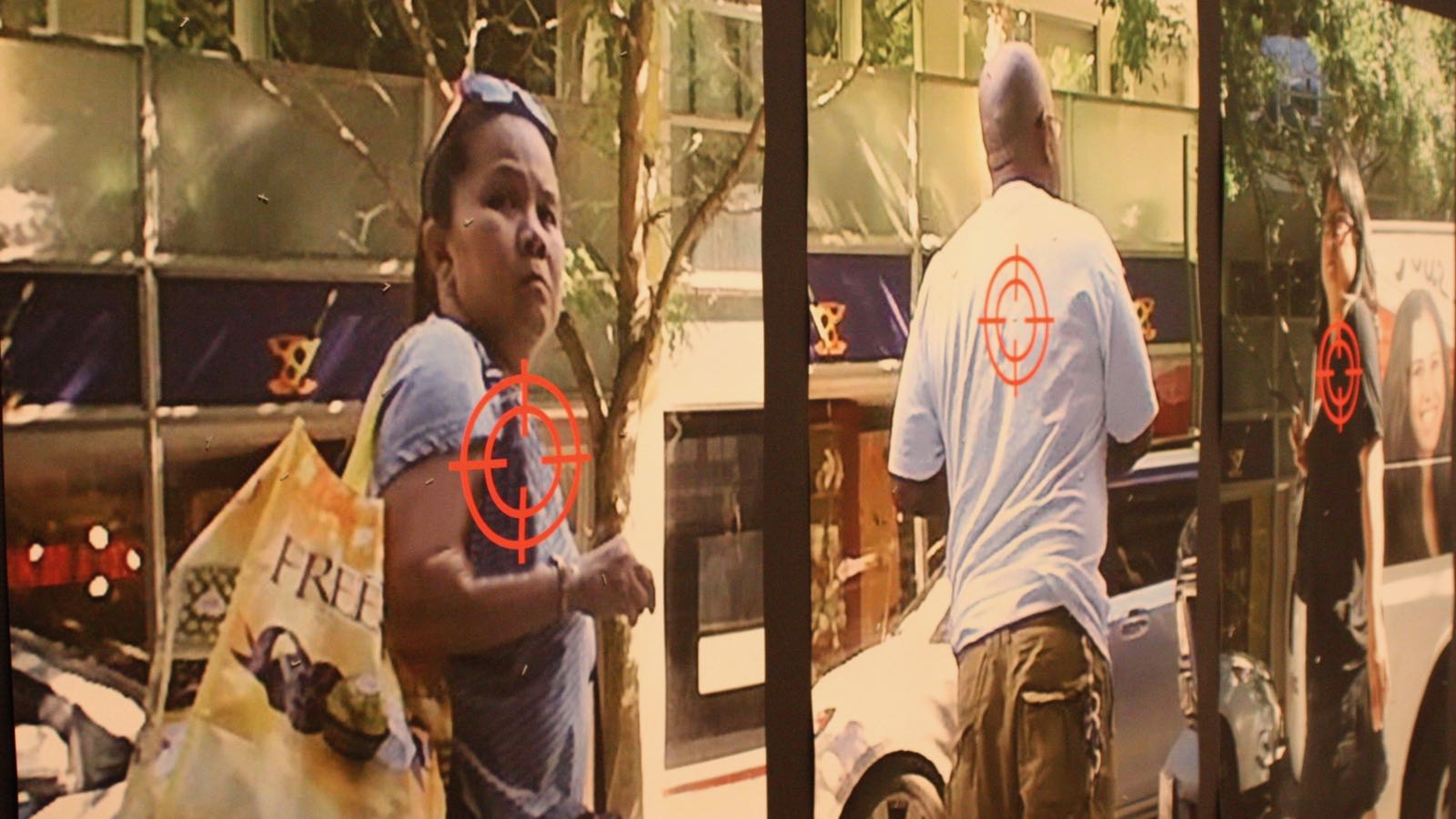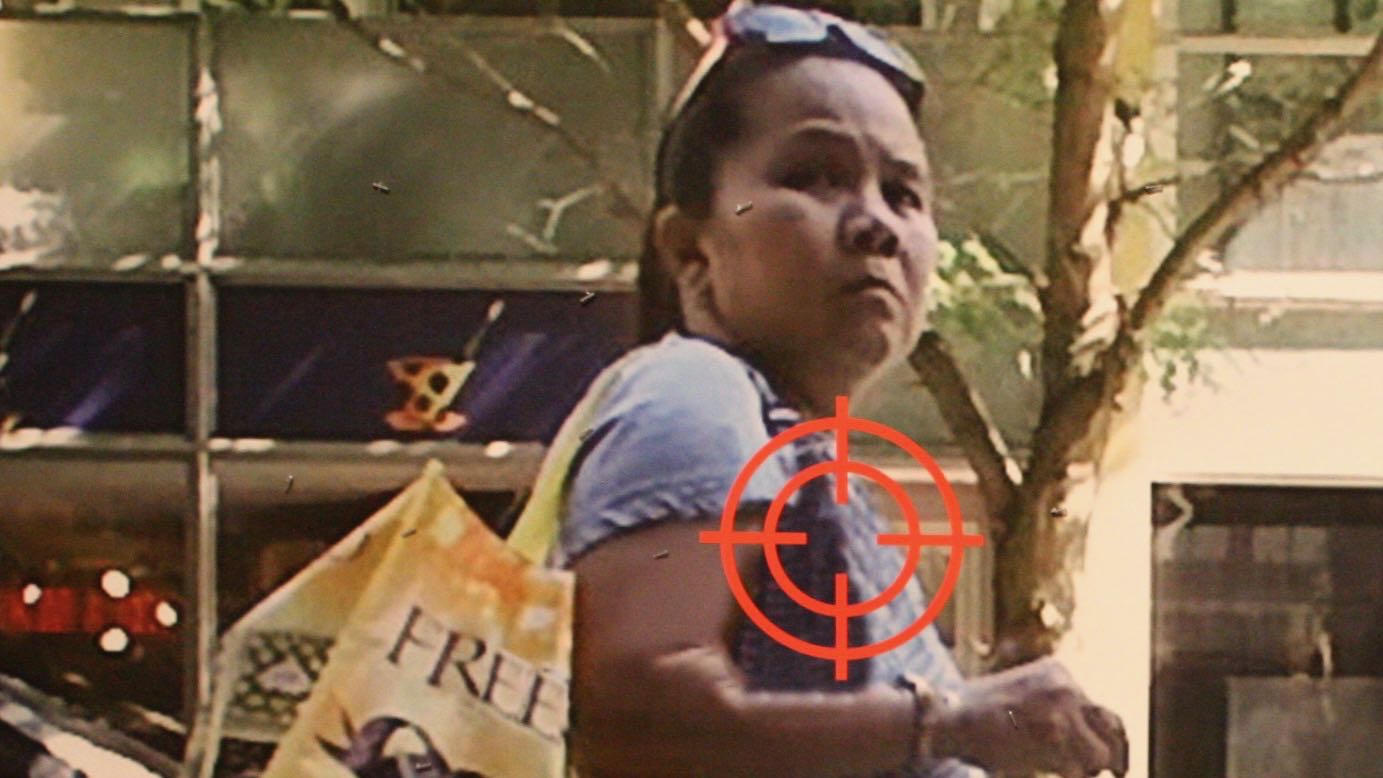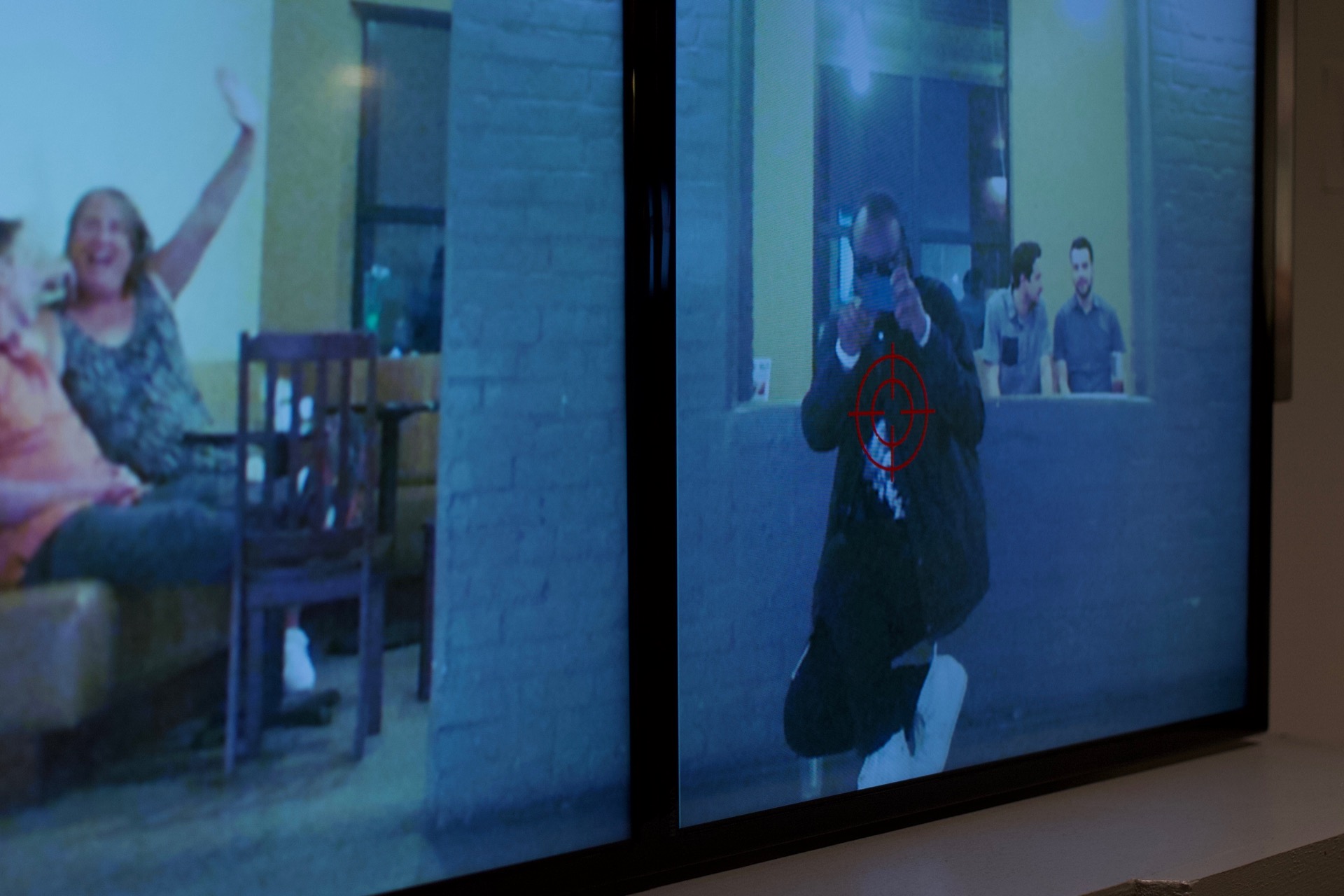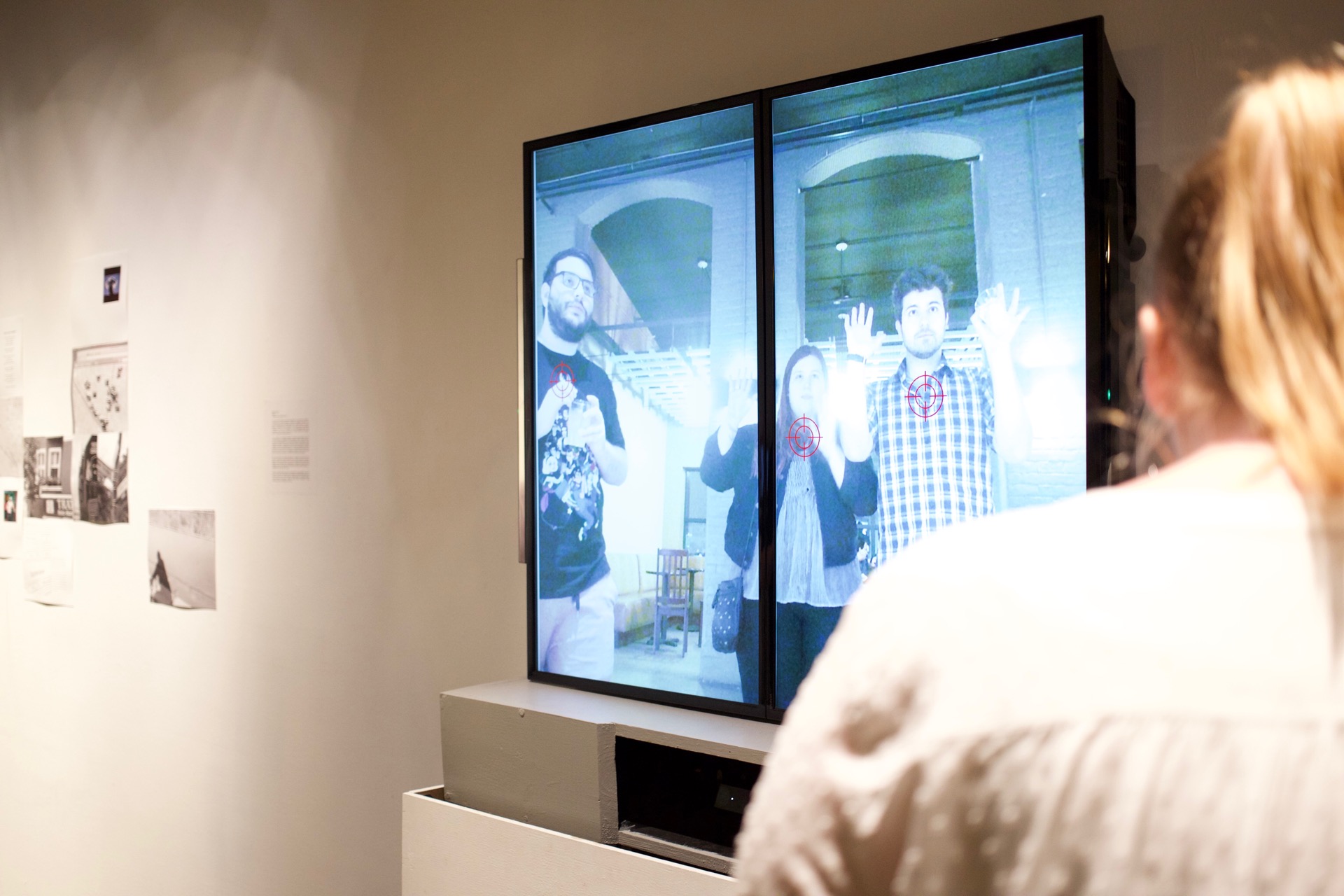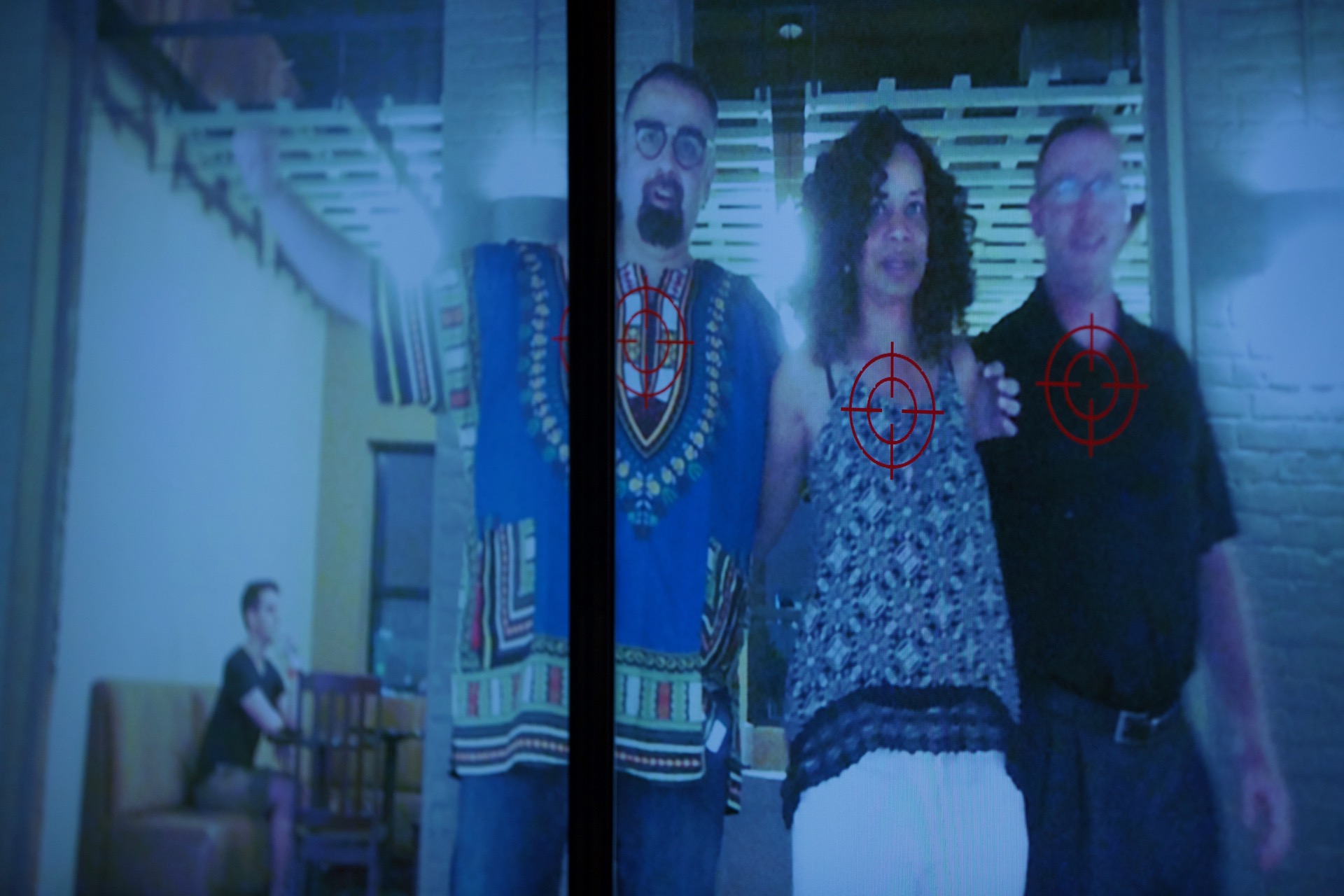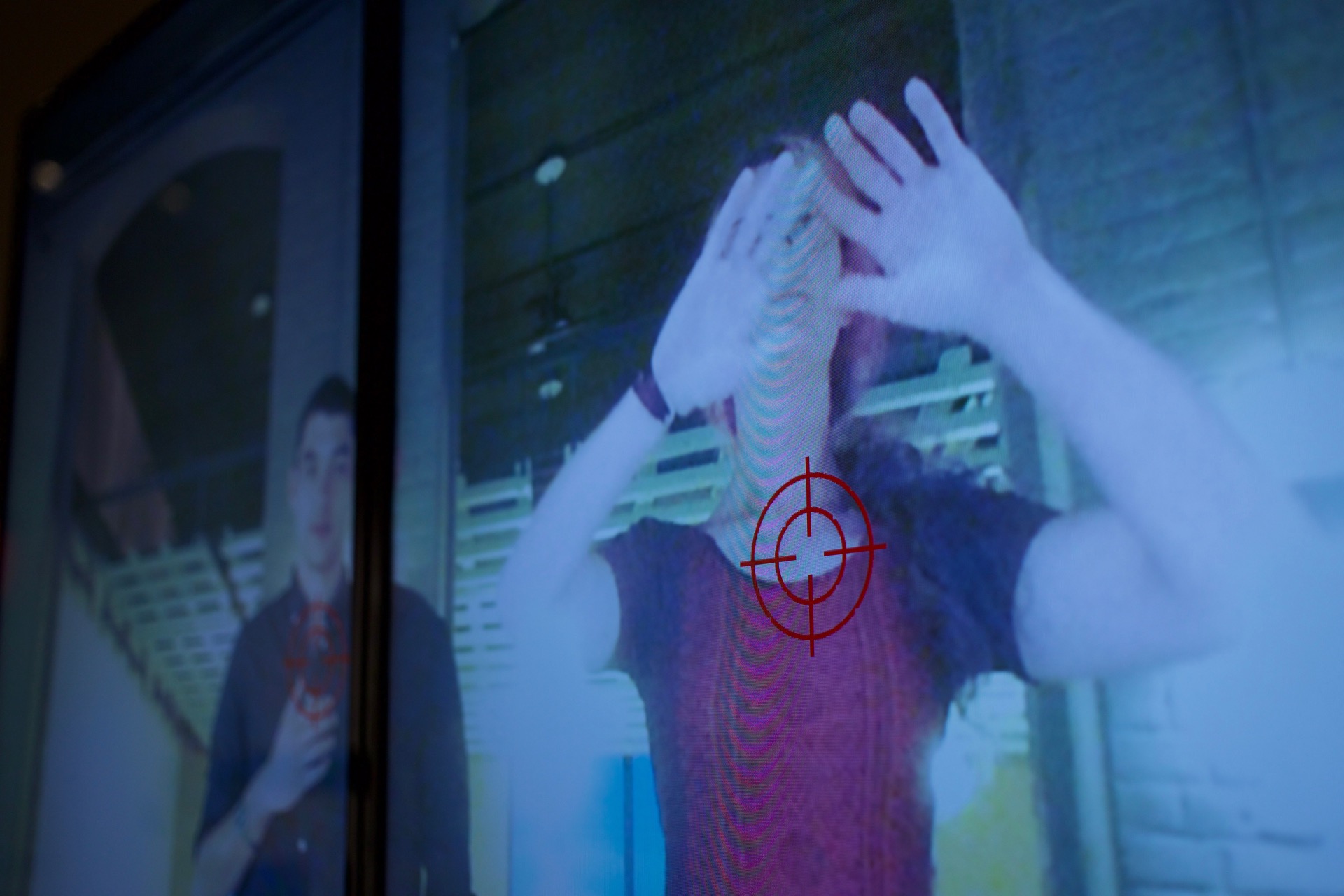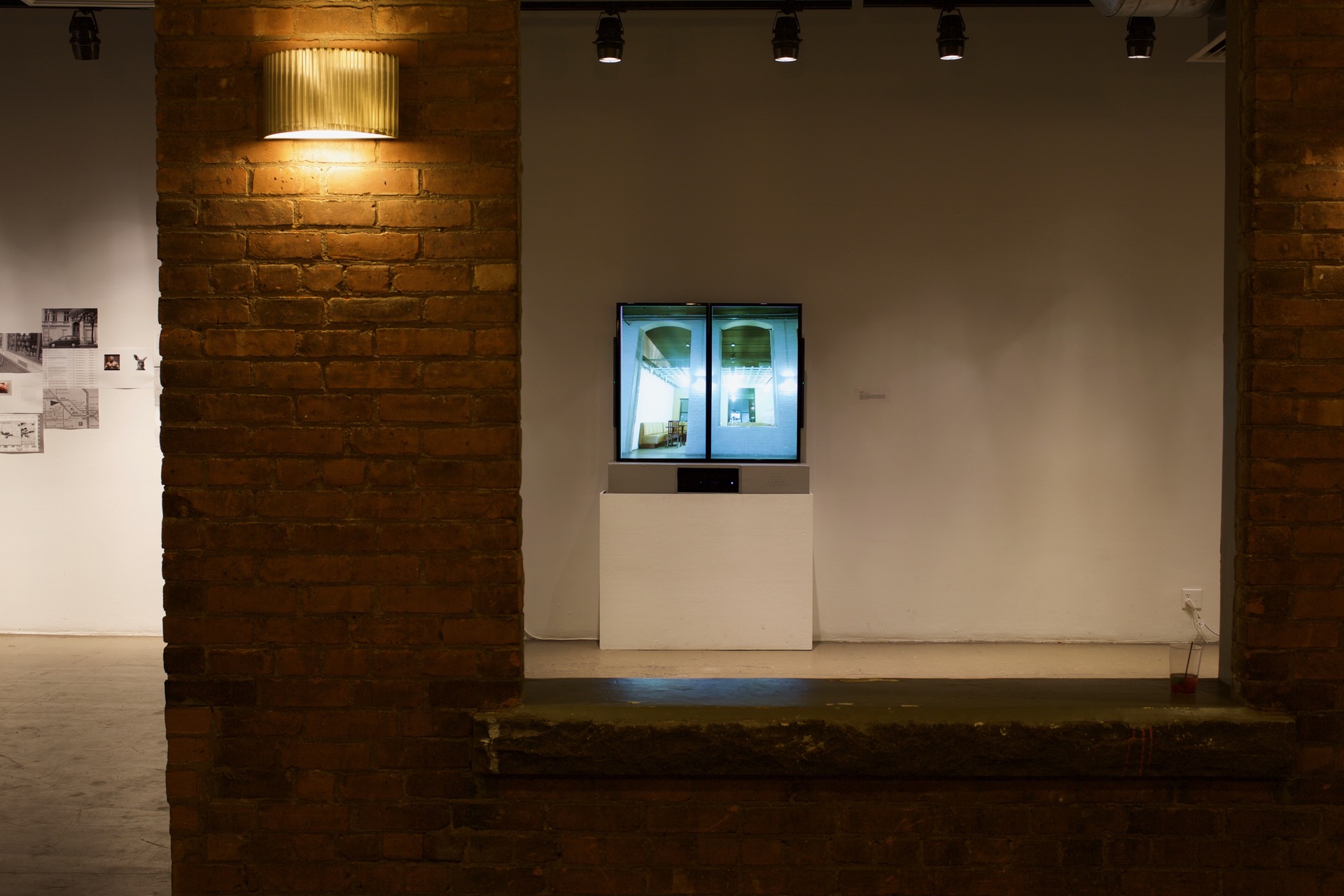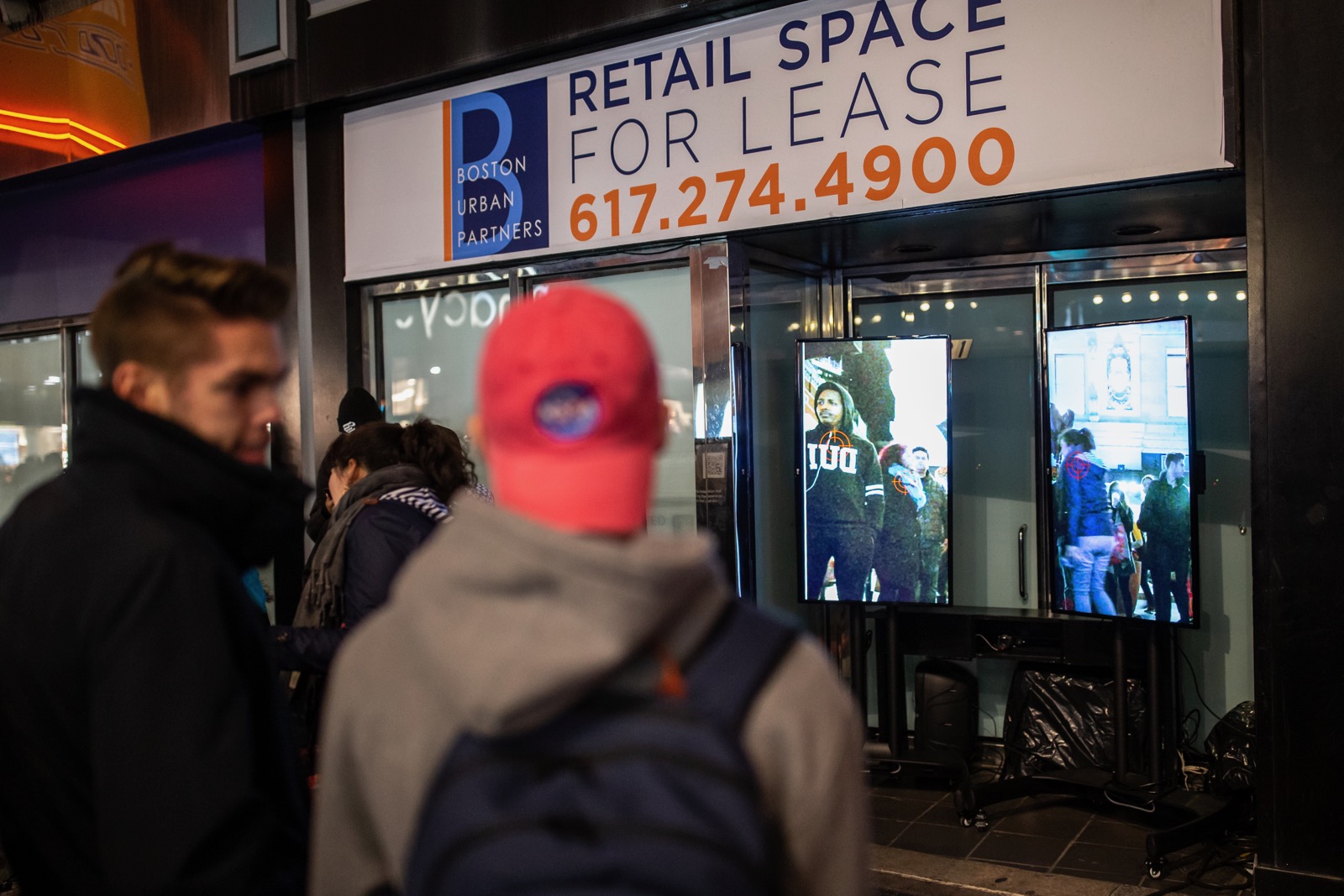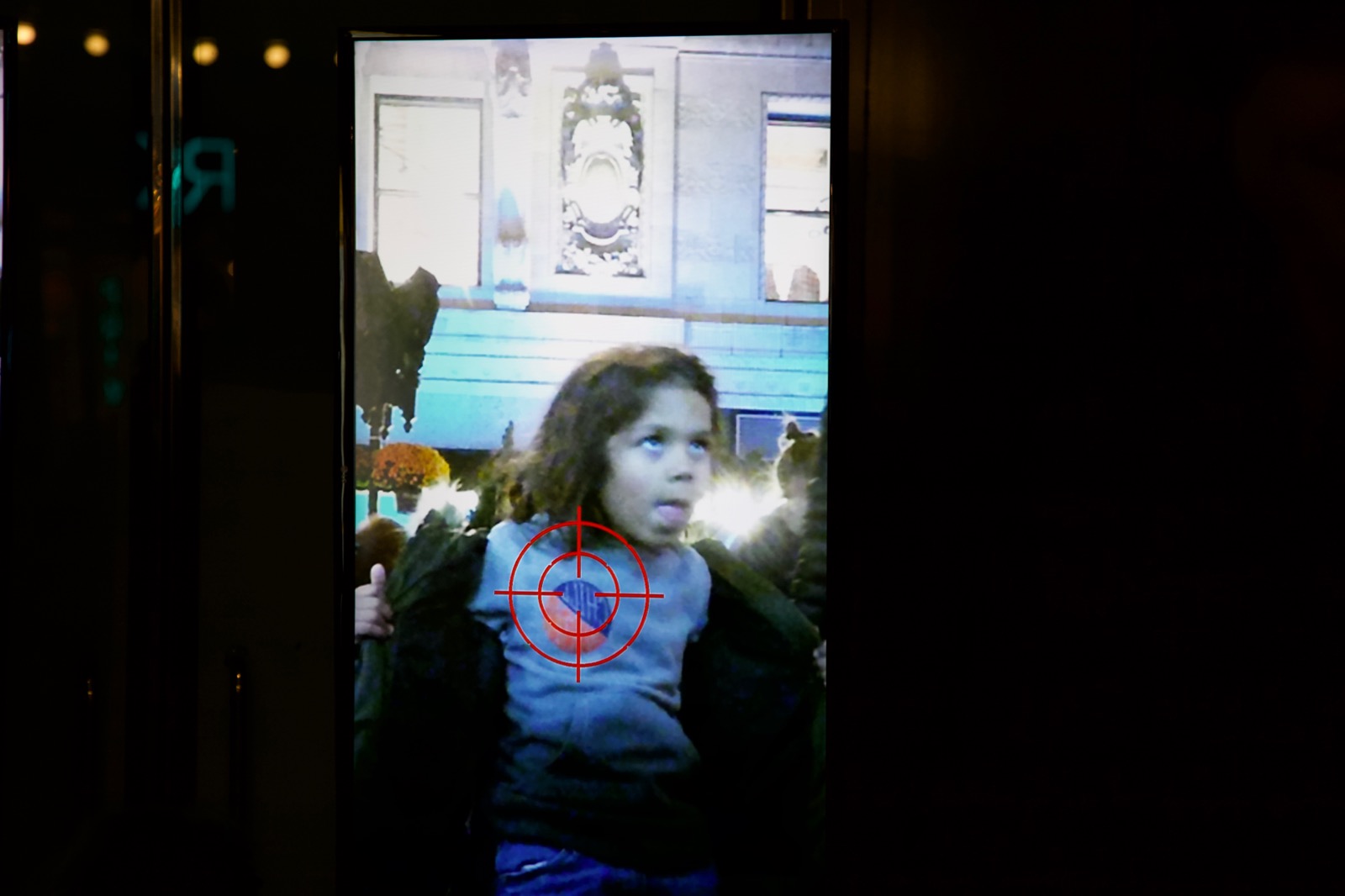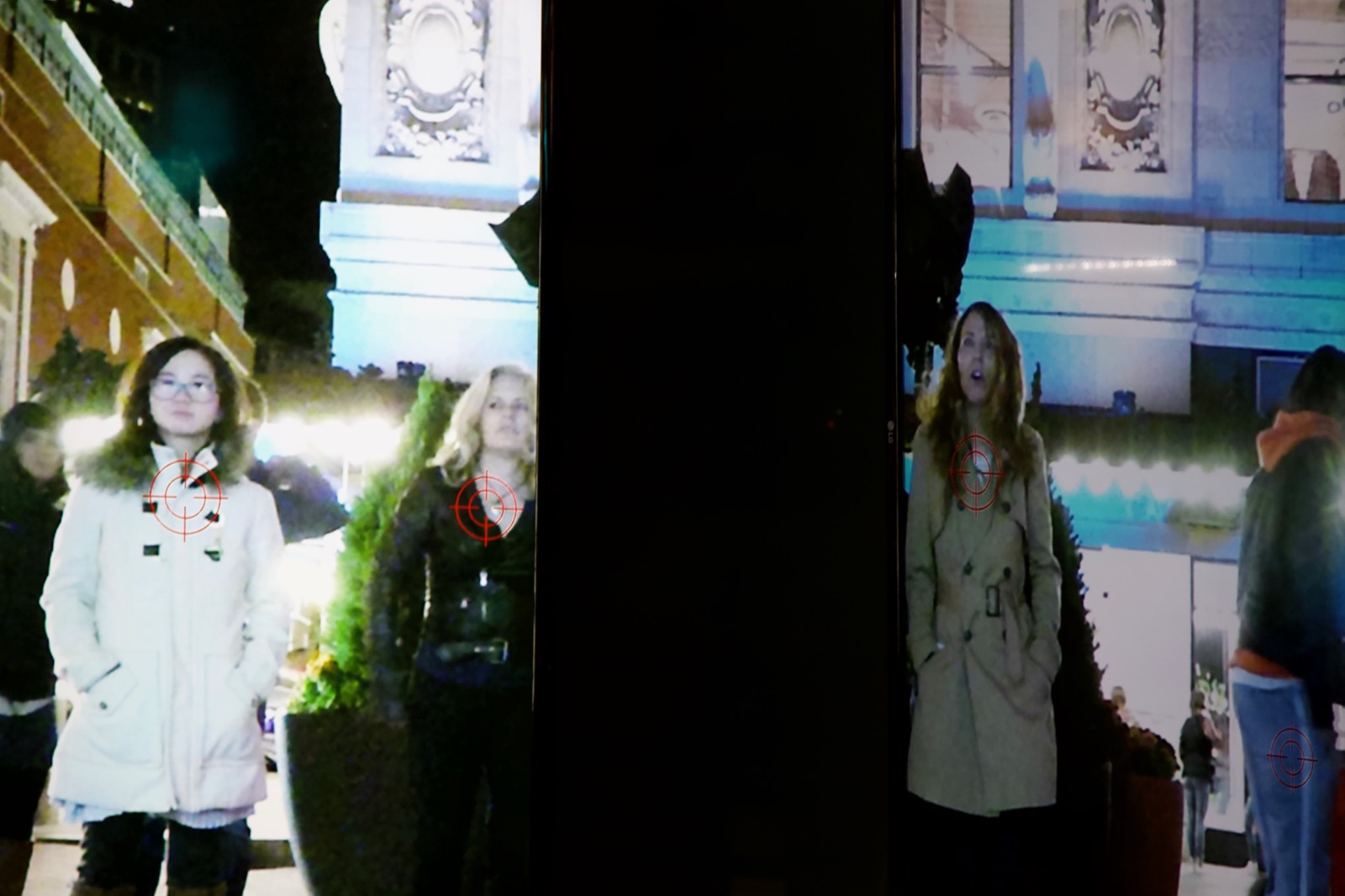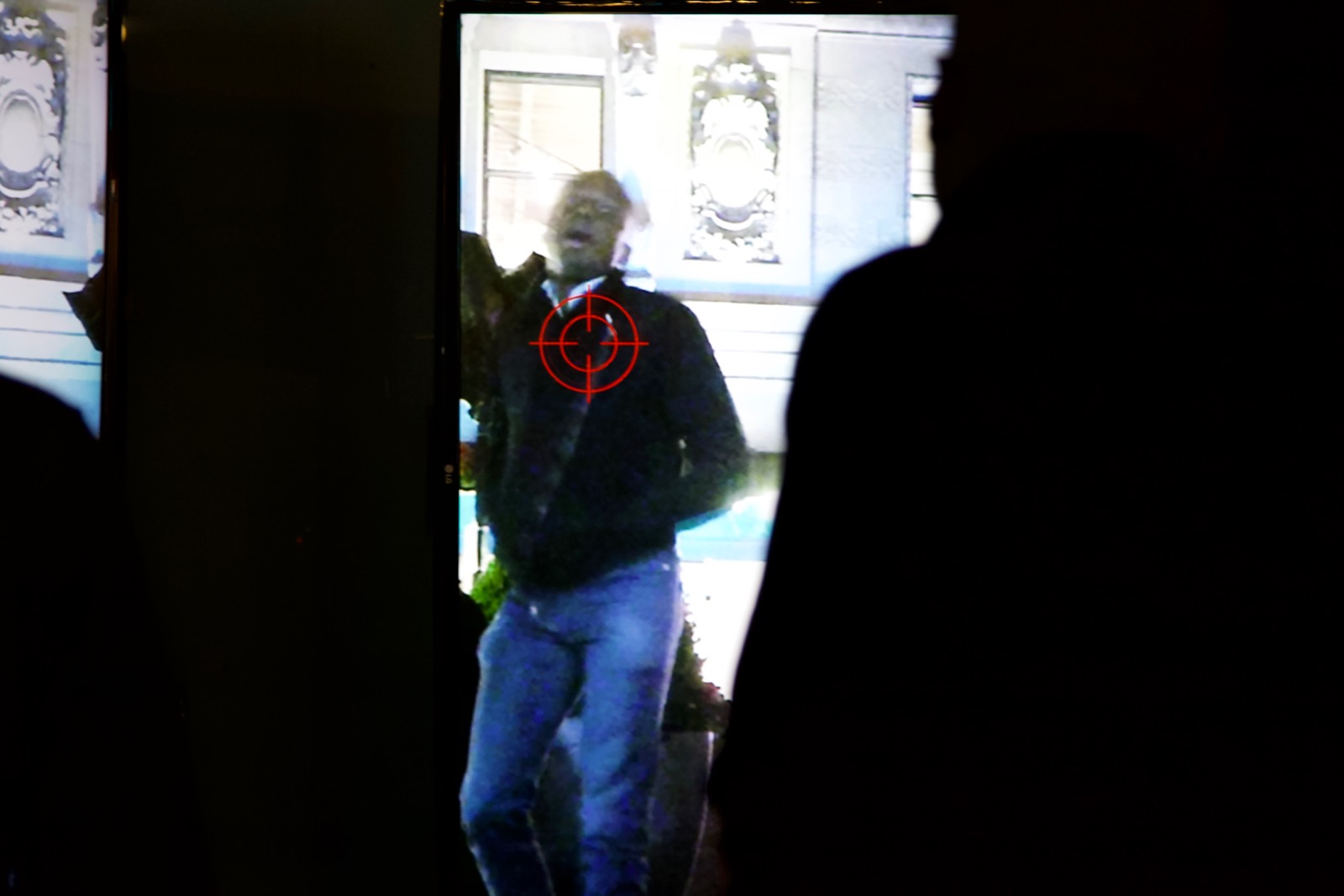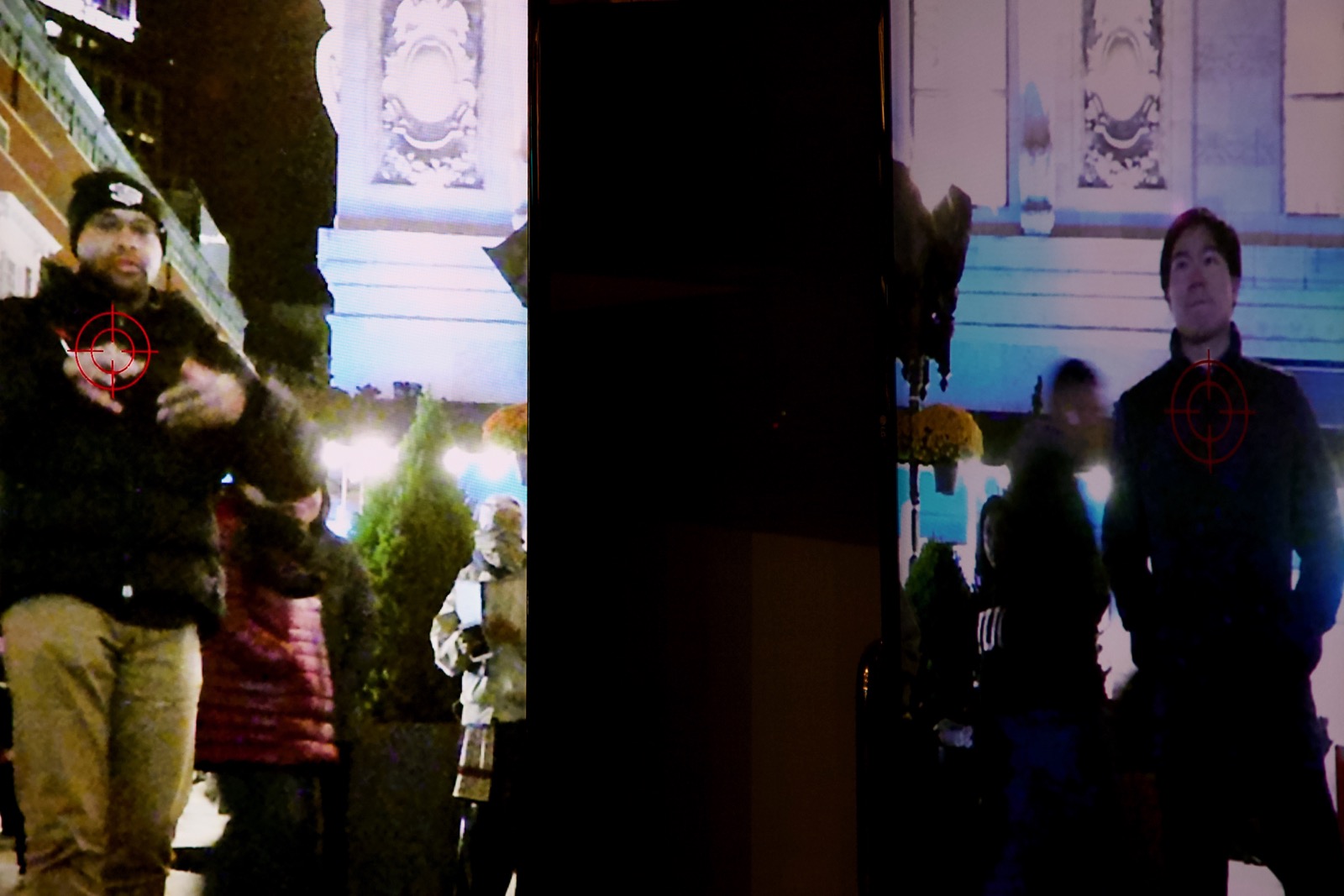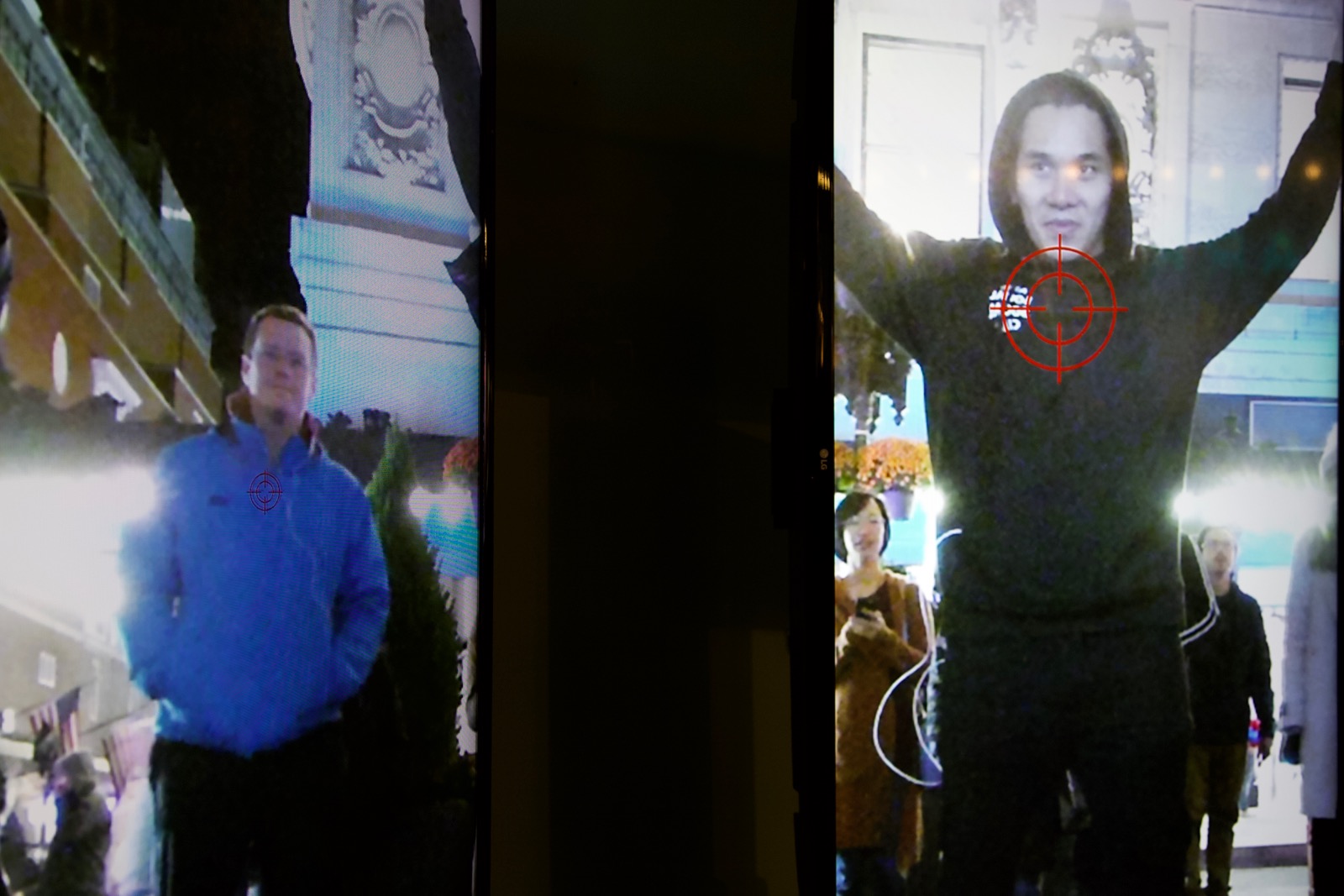Manhattan, 2016
Targeted is a site-specific interactive video installation that aims to make the invisible visceral by making the experience of being targeted felt by everyone, not just the usual suspects.
This two channel interactive video installation has components both outside and inside the gallery. Outside the gallery, which is to say, on the street, speakers blurt out police scanner audio as people walk by. When the viewer turns towards the gallery windows they see video of themselves with a target sign affixed to their chest.
Inside the gallery is a monitor that shows a live feed of people being targeted, which effectively transforms the viewer from the one who is targeted into one who surveils others being targeted.
Targeted debuted as part of a group show curated by Joey Lico that ran from September 7th until October 15th, 2016 at the Camera Club of New York (126 Baxter St). It measures 5' x 6'.
The accompanying audio is taken from NYPD scanners in precincts 1, 5, 7 in Manhattan (Chinatown, SoHo, Little Italy, Lower East Side, Tribeca, World Trade Center, and Financial District) and precincts 72, 76, 78 in Brooklyn (Red Hook, Carroll Gardens, Park Slope, Greenwood, and Sunset Park). This piece measures 8' x 4' and is built with OpenFrameworks and uses an open source library by Elliot Woods.
Shown for the first time at one of New York’s oldest art institutions, the Camera Club of New York, Targeted is the institution’s first interactive artwork in its 132 year history.
Susquehanna University, 2017
Photographs derived from the original installation in Chinatown (NYC) were exhibited in Photography as Social Conscience: Impassioned Portrayals of Race in the United States, a national photography exhibition judged by Ceaphas Stubbs. Prints are life-size measuring 36”x72” and are affixed directly to the wall with staples.
From left to right in the slideshow above: Targeted 2016-09-15 14:35:09, Targeted 2016-09-15 13:45:58, Targeted 2016-09-15 13:58:49. This show took place at the Lore Degenstein Gallery of Susquehanna University from January 28th to March 5th, 2017.
Real Art Ways (2017)
Targeted was shown in the group show Nothing To Hide? Art, Surveillance, and Privacy at Real Art Ways. This show also featured work by Trevor Paglen, Rafael Lozano-Hemmer, Eva and Franco Mattes, and Julian Oliver.
Illunimus Boston (2018)
In 2018 Targeted was shown as part of Illuninus Boston, an nighttime art installation festival in the heart of downtown Boston.
Artist Statement
In the summer of 2016, the day after Philando Castile and Alton Sterling were shot by police, I had an appointment with a curator to discuss an interactive work for an upcoming exhibition. The blank slate with which I normally approach site-specific projects was no longer possible as thoughts inspired by Black Lives Matter became unavoidable. As I joined in the chorus of “how horrible,” I began to question my place in that chorus. As a White male who grew up in a fairly privileged environment, did I really feel the pain of African Americans at that moment? Could I? The answer is of course, no.
So I set out to make work to address that empathy gap. Of course no piece of art could replicate the experience of another, or in this case, get a White person to know what it feels like to be Black in America, but I hoped it could help make the empathy gap less wide.
The goal of this project is to provide a framework for those who are not routinely targeted to feel what it’s like, if only for a moment, to be targeted while innocent. That said, I am fully aware that this piece also targets those who are routinely targeted; namely African Americans and all other minorities, who will naturally experience this piece differently.
I am not normally the kind of artist to seek counsel from others when making new work. Normally I have a napkin sketch idea and fly solo as I fill in the details. However, with this piece my overarching goal—more than creating a good work of art—was to make sure I wasn’t doing more harm than good; to not rub salt into existing wounds.
More than any other work I’ve ever made, I sought counsel. I sought counsel from BIPOC friends, colleagues, artists, and other professionals in the arts. Specifically, I would ask, “on a scale of 1—10, how bad is this?” hoping to leave room for people to feel at ease in expressing their potentially negative feelings or feedback. After a first round of hearing that the work wasn’t bad, but on the contrary, seemed good, I sought counsel from BIPOC people outside my circle—people I didn’t know—at parties, social events, or even those (unlucky enough) to be ride-sharing with me. Each time I would show a video of the piece (before the exhibition took place), and ask some version of, “on a scale of 1—10, how bad is this?” After this second round of receiving non-negative and generally encouraging feedback, I decided to exhibit the work. Even after it was installed, I would even ask those interacting with the work—people from all different walks of life—the same question, noting of course that I was the artist. To my relief, none of the individuals I asked, nor (to my knowledge at least), nor the thousands of people from many different walks of life who saw the piece first-hand in New York City, Hartford, Susquehanna (PA), and Boston, found the work objectionable or offensive.
When I give talks about this piece I try to take its criticisms head-on and the one I hear most often goes, “another White artist profiting from the suffering of African Americans and other minorities.” Of course I have to acknowledge there is a long, well-documented history of exactly that happening for centuries across all layers of American society, so it comes from a valid place.
As it so happened, I didn’t profit financially nor professionally from this work at all. The work was created—like all my video installations for the first ten years of my career—without any intention or expectation of financial profit. In fact, if history were to be a guide, judging from all my previous video installations, I fully expected to lose money on this installation, which is in fact what happened. And for those reading who may be unfamiliar with the art market, the market for multi-channel, site-specific video installations is minuscule to begin with and I never had any offers—neither pre nor post this installation—to acquire any of my work in this domain. By and large, this is not the type of art one creates with the expectation of selling. I did receive an honorarium of $500 from the Camera Club of New York, however I spent nearly twice as much on the supplies and technology required by the installation. The one time I had the potential to profit financially (from a juried award at Susquehanna University), I promised to donate the winnings to Black Lives Matter, however the work was not chosen for award, nor did it garner any press, nor did I reach put to any journalists or media publications to promote the work. That is all I can say about my thought process and the approach I took to making this piece; you’ll have to make your own judgement from here.
